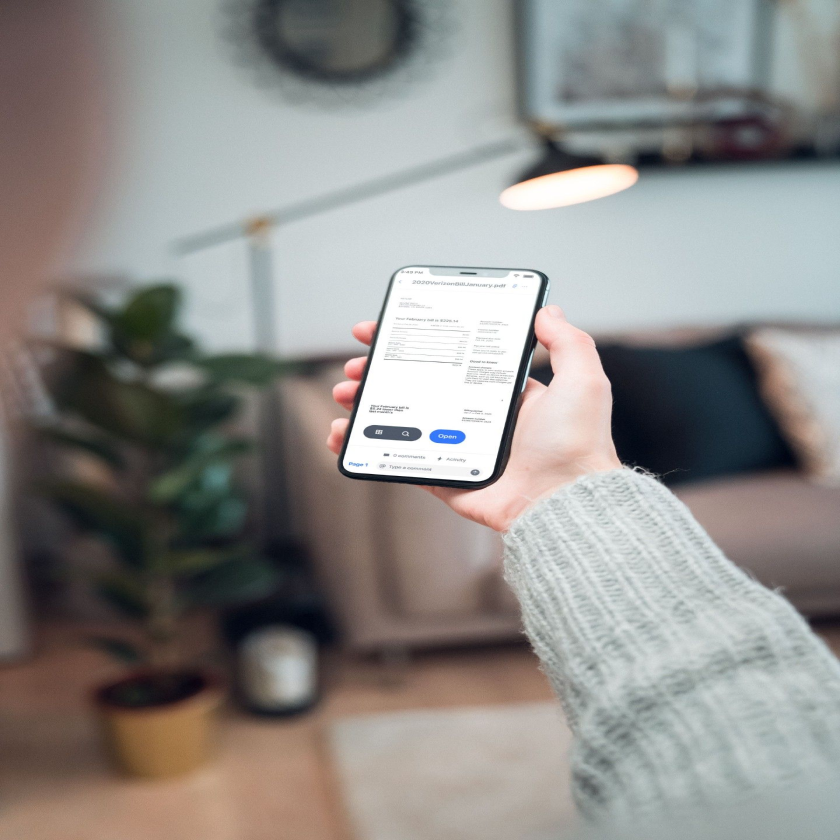What to do if your phone is stolen: Essential steps to take
Losing your phone—or having it stolen—can feel like a nightmare. Your contacts, messages, photos, and personal data are suddenly at risk. But acting quickly can improve your chances of recovery and protect your information from theft.
The best case scenario, is you find it—worst case, you recover your files on a new device with your Dropbox account or your latest phone backup. So, take a breath, and just follow our simple plan.
This guide walks you through how to report a stolen phone, track it, and protect your data so you can regain control of your accounts and devices.
What to do in the immediate aftermath of losing your phone
Follow these 9 steps once you’ve checked all your pockets, bags, or nearby areas—and are getting that sinking feeling of knowing your phone is not where it should be:
1. Confirm that your phone is lost or stolen
Retrace your steps and check common locations like your car, office, or home. If you were in a public place, contact lost-and-found services to see if someone turned it in.
2. Check your remote tracking
Android has Find My Device on another device, and Apple has Find My iPhone via iCloud, so checking these on another device is the next step. If your phone is nearby, play a sound to help locate it. If it's moving in an unfamiliar location, it may be stolen.
3. Lock your device remotely
If you’re using Find My Device (Android), select Secure Device to lock your phone and display a contact message.
If you have Find My iPhone (Apple), put your device in Lost Mode to prevent unauthorized access.
4. Change your passwords
To prevent unauthorized access, update passwords for:
- Email accounts (Gmail, Outlook, iCloud, etc)
- Social media apps (Facebook, Instagram, X, etc)
- Banking and payment apps (PayPal, Venmo, mobile banking)
Tip: Enable two-factor authentication (2FA) for added security.
5. Wipe your data remotely
If tracking confirms your phone is stolen, the best course of action is to remotely wipe all sensitive data to prevent identity theft.
- Find My Device (Android): Select Erase Device to delete all stored data
- Find My iPhone (Apple): Choose Erase iPhone in iCloud
Important: This will delete all data from your phone. Only do this if you're sure you can’t recover it.
- Dropbox Users: If your account is signed in on your lost phone, you can remotely remove all Dropbox files using Dropbox Remote Wipe from your account settings.
Note: Remote wipe deletes locally stored Dropbox files but keeps your data safe in the cloud, so you can restore everything on a new device anytime.
For extra protection: Keep automatic backups enabled with Dropbox Backup to secure all your files across devices.
6. Restore your data on a new device
If you get a new device, or you keep an old phone at home, you can restore your data from a backup. If you don’t use automatic backup features your phone may feel a little out of date.
7. Monitor your accounts for anything suspicious
Check recent logins and transactions on your bank, email, and social media accounts. Look for:
- Unfamiliar logins from unknown locations
- Password reset emails you didn’t request
- Unauthorized transactions or purchases
Report any suspicious activity to your bank or service provider immediately.
8. Contact your service provider to block your SIM
Your service provider can disable your SIM card, preventing calls, texts, and mobile data use.
AT&T: Call 1-800-331-0500
Verizon: Call 1-800-922-0204
T-Mobile: Call 1-800-937-8997
Tip: Ask about blacklisting your phone’s IMEI number, making it useless to thieves.
9. File a police report
Reporting a stolen phone increases the chances of recovering it and helps with insurance claims.
- Provide: IMEI number, last known location, and device details
- If stolen: File a police report immediately
To find your IMEI: For some devices, you can dial *#06# on your phone before it goes missing and save the number in your records.
Smartphone security tips
Phones hold sensitive data, so securing your device is critical. Follow these smartphone security tips to protect against theft:
- Use a strong password or PIN instead of simple patterns
- Enable biometric ID, like Face ID on iPhone or Face Recognition on Android
- Turn on automatic backups to store data safely in the cloud
- Keep your phone’s software and firmware up to date
- Change lock screen notifications so they don’t display any personal info/messages
- Be cautious of app downloads from anywhere apart from Apple’s App Store or Google Play
- Review app permissions to prevent unnecessary access to your camera or microphone
- Avoid using public Wi-Fi networks
- Enable two-step verification (2FA) wherever possible
- Don’t acknowledge or respond to phishing/ransom scams—especially after a theft
- Use software with state-of-the-art security features, like Dropbox, to protect data away from your device
- Regularly backup your hard work by using Dropbox Backup
- Always enable Find My Device or Find My iPhone
Are you a “12345” or “password” person? If so, or even if you’re not, learn how to check your password security and improve it—you’ll get some great tips on protecting your accounts.
Smartphones come with lots of backup options for your device, so use them. The way you do it varies by manufacturer. See how to back up your iPhone on a Mac—a guide for iPhone users.
Use Dropbox to protect all your important files—wherever they are. You can also check out what to do if your laptop is stolen—for details on what to do if your computer goes missing.
How Dropbox can help protect your data
Even if your phone is lost or stolen, your files don’t have to be. Dropbox ensures your important documents, photos, and backups remain secure and accessible from any device.
- Automatically sync files across devices, so you never lose access
- Store important documents in the cloud, preventing data loss
- Restore files seamlessly on a new device if your phone is lost or stolen
Use Dropbox Remote Wipe to remove files from a lost phone while keeping them safely stored in your account.
To upload files from your phone:
- Download and open the Dropbox mobile app in the App Store or Google Play.
- Open a folder in Dropbox where you want to store your file.
- Tap the "+" (plus sign) at the bottom of the screen.
- Select Upload File, then choose your document or image.
Why it matters: Everything you store in Dropbox syncs automatically, so you can access your files anytime, anywhere—even if your phone is gone.
Keep your data secure with Dropbox
Losing a phone can be stressful, but acting fast can protect your data and accounts. By tracking, locking, and backing up your phone, you reduce the risks of identity theft and data loss.
Don’t wait until it’s too late. Secure your files today with Dropbox Backup, so you’re always prepared for the unexpected.
Frequently asked questions
Yes, especially if you see it on Find My iPhone or Find My Device. Police can put phones on a blacklist, and credit card companies may need their records.
Not very. A report from the FCC includes data saying that 1 in 10 Americans are victims of phone theft—but that 68% of them never recover it.
If your phone is stolen it’s better to report it stolen—doing otherwise is fraud. Likewise, if you just lose a phone, never report it as stolen.


